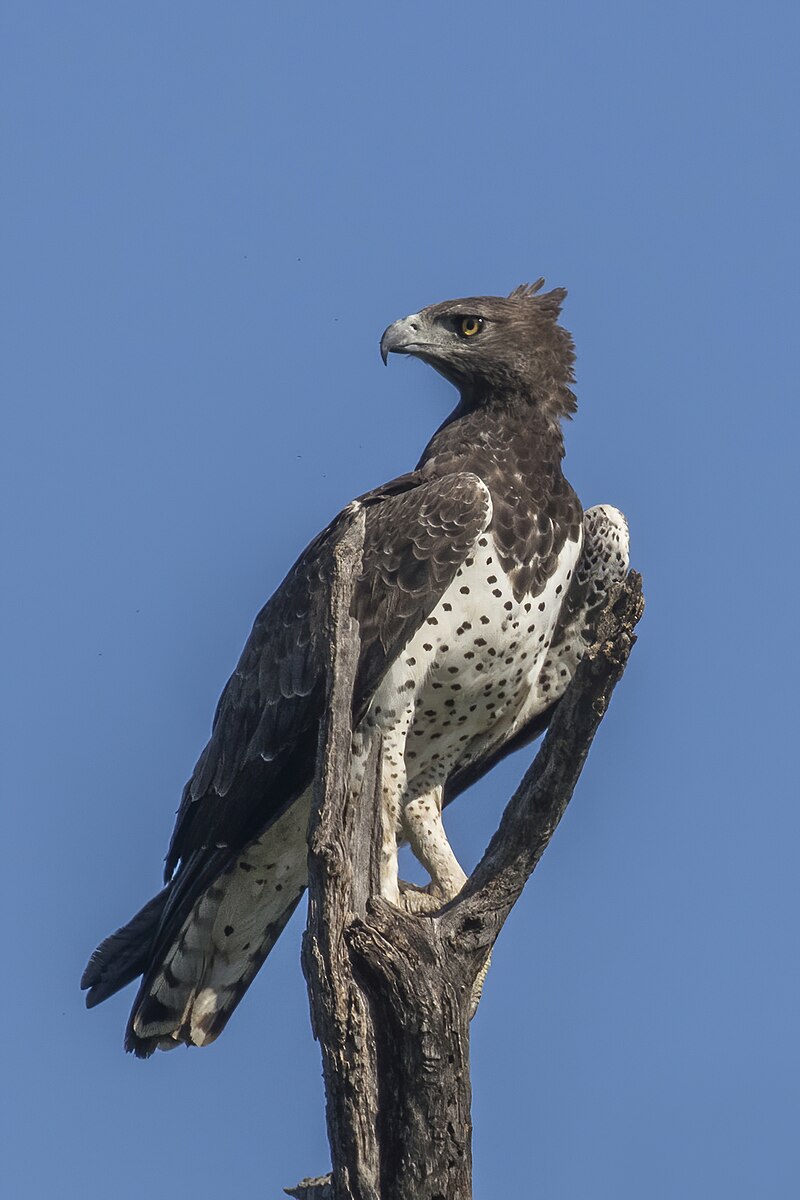Martial eagles are one of the largest birds of prey in the world, known for their impressive size, strength, and hunting prowess. Their eggs, which are the largest among booted eagles, are a fascinating aspect of their biology. In this comprehensive guide, we’ll explore the intricate details of martial eagle egg hatching, providing you with a deeper understanding of this captivating process.
The Martial Eagle Egg
Martial eagle eggs are truly remarkable, measuring an average of 79.9 mm × 63.4 mm (3.15 in × 2.50 in) in size. These eggs are slightly larger than those of golden or Verreaux’s eagles, and considerably larger than those of crowned eagles. The size of the egg is a testament to the power and size of the martial eagle, as it is one of the largest birds of prey in the world.
Incubation Period
 Image source: Martial eagle by Charles J. Sharp
Image source: Martial eagle by Charles J. Sharp
The incubation period for martial eagle eggs is typically between 45 to 53 days. During this time, the female martial eagle takes on the majority of the incubation duties, with the male occasionally relieving her for a maximum of three hours per day. This dedicated incubation period is crucial for the successful hatching of the egg, as the embryo requires a consistent temperature and environment to develop properly.
Parental Care
After the egg hatches, the parental care of the martial eagle chick is a delicate and intricate process. The female martial eagle remains the primary caretaker, with her attendance at the nest dropping considerably around seven weeks after hatching. At this point, she resumes her hunting duties, while the male is rarely seen near the nest. The male’s role is primarily to bring prey to the female, who then distributes it between herself and the nestling. Interestingly, the male has never been observed feeding the chick directly.
Prey and Hunting Behavior
Martial eagles are considered apex predators in the ecosystems they inhabit, consuming a wide variety of prey. Their diet primarily consists of birds and other medium-sized vertebrates, including poultry, smaller livestock, small antelopes and hyraxes, rabbits, snakes and lizards, and even monkeys. These powerful birds of prey hunt from the air or from high perches, using their keen eyesight to spot their prey from several kilometers away. When they spot their target, they can dive at speeds of up to 230 km (143 miles) per hour to attack.
Conservation Status
Despite their impressive size and hunting abilities, martial eagles are currently listed as an endangered species by the International Union for Conservation of Nature and Natural Resources (IUCN). This is due to a variety of threats, including hunting, trapping, poisoning, habitat loss, degradation, and declines in prey populations. While some martial eagles nest in protected areas, their large territories often require them to venture into unprotected areas to hunt, putting them at risk.
Conclusion
The martial eagle egg hatching process is a fascinating and intricate aspect of these magnificent birds of prey. From the impressive size of the eggs to the dedicated parental care and hunting behavior, the martial eagle’s life cycle is a testament to the wonders of the natural world. As we continue to learn more about these endangered species, it is crucial that we work to protect and conserve their habitats, ensuring that future generations can witness the awe-inspiring sight of a martial eagle soaring through the skies.

